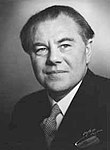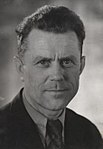1953 Danish general election
Appearance
| ||||||||||||||||||||||||||||||||||||||||||||||||||||||||||||||||||||||||||||||||||||||||||||||||||||||||||||
All 179 seats to the Folketing 90 seats were needed for a majority | ||||||||||||||||||||||||||||||||||||||||||||||||||||||||||||||||||||||||||||||||||||||||||||||||||||||||||||
|---|---|---|---|---|---|---|---|---|---|---|---|---|---|---|---|---|---|---|---|---|---|---|---|---|---|---|---|---|---|---|---|---|---|---|---|---|---|---|---|---|---|---|---|---|---|---|---|---|---|---|---|---|---|---|---|---|---|---|---|---|---|---|---|---|---|---|---|---|---|---|---|---|---|---|---|---|---|---|---|---|---|---|---|---|---|---|---|---|---|---|---|---|---|---|---|---|---|---|---|---|---|---|---|---|---|---|---|---|
| Turnout | 80.6% | |||||||||||||||||||||||||||||||||||||||||||||||||||||||||||||||||||||||||||||||||||||||||||||||||||||||||||
| ||||||||||||||||||||||||||||||||||||||||||||||||||||||||||||||||||||||||||||||||||||||||||||||||||||||||||||
| ||||||||||||||||||||||||||||||||||||||||||||||||||||||||||||||||||||||||||||||||||||||||||||||||||||||||||||
General elections were held in Denmark on 22 September 1953,[1] the first under the new constitution. The Social Democratic Party remained the largest in the Folketing, with 74 of the 179 seats. Voter turnout was 80.6% in Denmark proper and 68.6% in Greenland.[2]
Results
Denmark
| Party | Votes | % | Seats | +/– |
|---|---|---|---|---|
| Social Democratic Party | 894,913 | 41.3 | 74 | +13 |
| Venstre | 499,656 | 23.1 | 42 | +9 |
| Conservative People's Party | 364,960 | 16.8 | 30 | +4 |
| Danish Social Liberal Party | 169,295 | 7.8 | 14 | +1 |
| Communist Party of Denmark | 93,824 | 4.3 | 8 | +1 |
| Justice Party of Denmark | 75,449 | 3.5 | 6 | –3 |
| Independent Party | 58,573 | 2.7 | 0 | New |
| Schleswig Party | 9,721 | 0.5 | 1 | +1 |
| Invalid/blank votes | 5,645 | – | – | – |
| Total | 2,172,036 | 100 | 175 | +26 |
| Source: Nohlen & Stöver | ||||
Faroe Islands
Only two candidates ran in the two-seat Faroes constituency, one from the Union Party and one from the Social Democratic Party. Both were re-elected unopposed.[2]
Greenland
| Party | Votes | % | Seats |
|---|---|---|---|
| Independents | 6,183 | 100 | 2 |
| Invalid/blank votes | 232 | – | – |
| Total | 6,415 | 100 | 2 |
| Source: Nohlen & Stöver | |||
References




